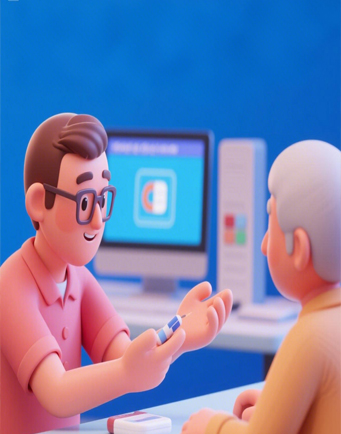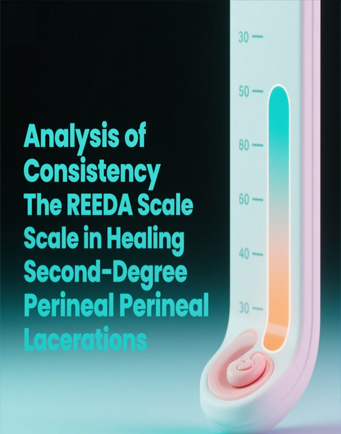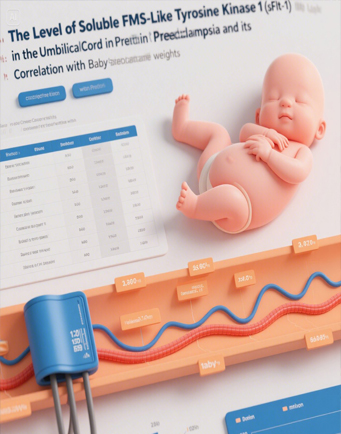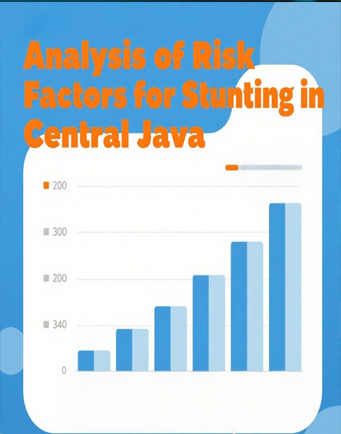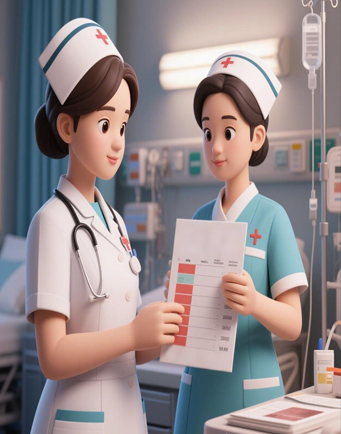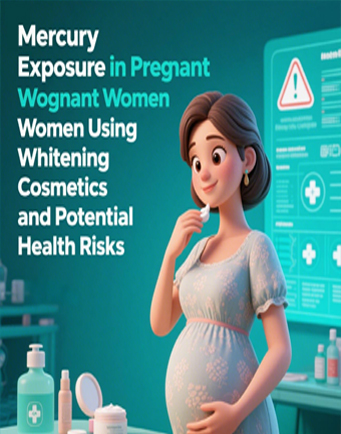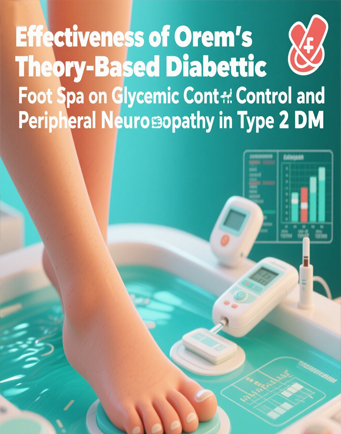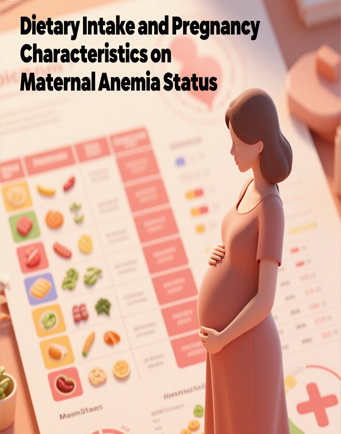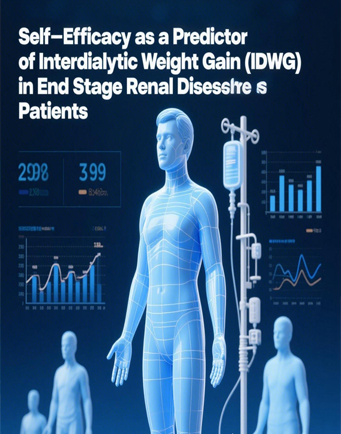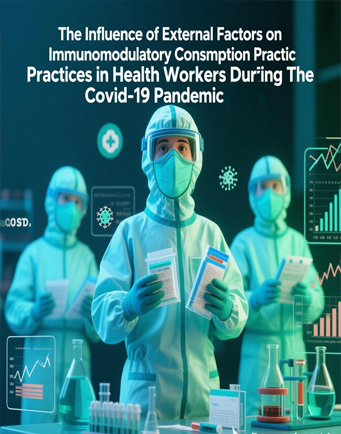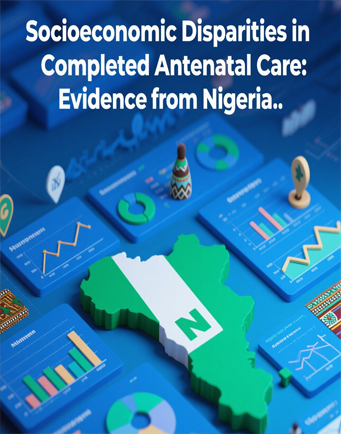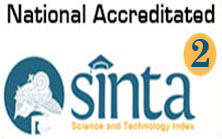Factors Associated with Miscarriages and Abortions among Women of Reproductive Age in Kyrgyzstan: An Analysis of the Multiple Indicators Cluster Survey 2023
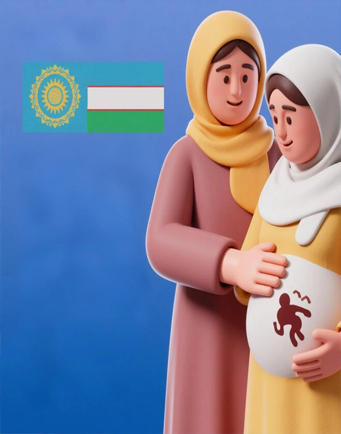
Downloads
Reproductive health, including miscarriages and abortions, remains a critical public health issue, especially in low- and middle-income countries such as Kyrgyzstan, where access to quality health services is limited, particularly in rural areas. Unsafe abortions contribute significantly to maternal morbidity and mortality, while miscarriages can have physical, emotional, and social consequences for women. This study aims to explore factors associated with miscarriages and abortions among women of reproductive age in Kyrgyzstan. This study used secondary data from Kyrgyzstan’s Multiple Indicator Survey (MICS) 2023, which provides comprehensive data on health, education, and living conditions. The survey focused on women aged 15–49 who had experienced miscarriage or abortion, analyzing factors such as age, marital status, education, and wealth index. Data analysis was performed using binary logistic regression with STATA software to identify demographic and socioeconomic factors associated with miscarriage and abortion. The finding of this study were 11.47% of women experienced miscarriage and 6.45% experienced abortion, with most participants aged 30-39, married, with a junior high school education, residing in rural areas, and belonging to the Kyrgyz ethnic group. Factors linked to miscarriage included age, marital status, rural residency, Russian ethnicity, and wealth level, while factors associated with abortion included age, marital status, rural residence, and certain wealth levels (second, middle, and fourth). The study suggests prioritizing reproductive health education and support for women, especially those in rural areas and with lower to middle income, to help reduce the risks of miscarriage and abortion.
Alipanahpour, S., Tayebi, N., Zarshenas, M., & Akbarzadeh, M. (2021). Short-Term Physical and Psychological Health Consequences of Induced and Spontaneous Abortion: A Cross-sectional Study. Shiraz E-Medical Journal, 22(12), e111809. https://doi.org/10.5812/semj.111809
Ayamolowo, L. B., Ayamolowo, S. J., Adelakun, D. O., & Adesoji, B. A. (2024). Factors influencing unintended pregnancy and abortion among unmarried young people in Nigeria: a scoping review. BMC Public Health, 24(1), 1494. https://doi.org/10.1186/s12889-024-19005-8
Barrera, N., Omolaoye, T. S., & Du Plessis, S. S. (2022). A contemporary view on global fertility, infertility, and assisted reproductive techniques. Fertility, Pregnancy, and Wellness, pp. 93–120. Elsevier. https://doi.org/10.1016/B978-0-12-818309-0.00009-5
Busnelli, A., Somigliana, E., Cirillo, F., & Levi-Setti, P. E. (2021). Is diminished ovarian reserve a risk factor for miscarriage? Results of a systematic review and meta-analysis. Human Reproduction Update, 27(6), 973–988. https://doi.org/10.1093/humupd/dmab018
Cuenca, D. (2023). Pregnancy loss: Consequences for mental health. Frontiers in global women's health, 3, 1032212. https://doi.org/10.3389/fgwh.2022.1032212
Damayanti, N. A., Wulandari, R. D., & Ridlo, I. A. (2023). Maternal Health Care Utilization Behavior, Local Wisdom, and Associated Factors Among Women in Urban and Rural Areas, Indonesia. International Journal of Women’s Health, 15, 665–677. https://doi.org/10.2147/IJWH.S379749
De Londras, F., Cleeve, A., Rodriguez, M. I., Farrell, A., Furgalska, M., & Lavelanet, A. F. (2022). The impact of provider restrictions on abortion-related outcomes: a synthesis of legal and health evidence. Reproductive Health, 19, 95. https://doi.org/10.1186/s12978-022-01405-x
Desrosiers, A., Betancourt, T., Kergoat, Y., Servilli, C., Say, L., & Kobeissi, L. (2020). A systematic review of sexual and reproductive health interventions for young people in humanitarian and lower-and-middle-income country settings. BMC Public Health, 20, 666. https://doi.org/10.1186/s12889-020-08818-y
Du Fossé, N. A., van der Hoorn, M.-L. P., van Lith, J. M. M., le Cessie, S., & Lashley, E. E. L. O. (2020). Advanced paternal age is associated with an increased risk of spontaneous miscarriage: a systematic review and meta-analysis. Human Reproduction Update, 26(5), 650–669. https://doi.org/10.1093/humupd/dmaa010
Fett, R. (2023). It Starts with the Egg: The Science of Egg Quality for Fertility, Miscarriage, and IVF. Franklin Fox Publishing LLC.
Foster, D. G., Biggs, M. A., Ralph, L., Gerdts, C., Roberts, S., & Glymour, M. M. (2022). Socioeconomic Outcomes of Women Who Receive and Women Who Are Denied Wanted Abortions in the United States. American Journal of Public Health, 112(9), 1290–1296. https://doi.org/10.2105/AJPH.2017.304247
Gao, L., Qu, J., & Wang, A. Y. (2020). Anxiety, depression and social support in pregnant women with a history of recurrent miscarriage: a cross-sectional study. Journal of Reproductive and Infant Psychology, 38(5), 497–508. https://doi.org/10.1080/02646838.2019.1652730
Ghimire, P. R., Akombi-Inyang, B. J., Tannous, C., & Agho, K. E. (2020). Association between obesity and miscarriage among women of reproductive age in Nepal. PLOS ONE, 15(8), e0236435. https://doi.org/10.1371/journal.pone.0236435
Heymann, O., Odum, T., Norris, A. H., & Bessett, D. (2022). Selecting an Abortion Clinic: The Role of Social Myths and Risk Perception in Seeking Abortion Care. Journal of Health and Social Behavior, 63(1), 90–104. https://doi.org/10.1177/00221465211044413
Iwanowicz-Palus, G., Mróz, M., & Bień, A. (2021). Quality of life, social support and self-efficacy in women after a miscarriage. Health and Quality of Life Outcomes, 19, 16. https://doi.org/10.1186/s12955-020-01662-z
Janaki, S., & Prabakar, S. (2024). Analysing maternal and reproductive health inequalities in tamil nadu: A bibliometric study of trends, patterns, and research gaps. Multidisciplinary Reviews, 8(3), 2025097. https://doi.org/10.31893/multirev.2025097
Kicia, M., Skurzak, A., Korżyńska-Piętas, M., Palus, A., & Iwanowicz-Palus, G. (2021). Assessment of the relationship between socio-demographic factors and intensity of perceived stress in a group of women hospitalized due to miscarriage. Medycyna Ogólna i Nauki o Zdrowiu, 27(3), 285–290. https://doi.org/10.26444/monz/140310
Kitole, F. A., Shahid, M., Bashir, S., Malik, N. I., Ullah, S., Ahmad, J. B., ... & Tang, K. (2025). Antenatal Healthcare Utilization and Maternal Health Outcomes in Rural African Setting: Evidence from Tanzania. Global Social Welfare, 1-18. https://doi.org/10.1007/s40609-025-00379-5
Kukulskienė, M., & Žemaitienė, N. (2022). Postnatal Depression and Post-Traumatic Stress Risk Following Miscarriage. International Journal of Environmental Research and Public Health, 19(11), 6515. https://doi.org/10.3390/ijerph19116515
La, X., Wang, W., Zhang, M., & Liang, L. (2021). Definition and Multiple Factors of Recurrent Spontaneous Abortion. Singapore: Springer Singapore. https://doi.org/10.1007/978-981-33-4187-6_11
Lee, L., Ma, W., Davies, S., & Kammers, M. (2023). Toward Optimal Emotional Care During the Experience of Miscarriage: An Integrative Review of the Perspectives of Women, Partners, and Health Care Providers. Journal of Midwifery & Women’s Health, 68(1), 52–61. https://doi.org/10.1111/jmwh.13414
Marshall, N. E., Abrams, B., Barbour, L. A., Catalano, P., Christian, P., Friedman, J. E., Hay, W. W., Hernandez, T. L., Krebs, N. F., Oken, E., Purnell, J. Q., Roberts, J. M., Soltani, H., Wallace, J., & Thornburg, K. L. (2022). The importance of nutrition in pregnancy and lactation: lifelong consequences. American Journal of Obstetrics and Gynecology, 226(5), 607–632. https://doi.org/10.1016/j.ajog.2021.12.035
Moradinazar, M., Najafi, F., Nazar, Z. M., Hamzeh, B., Pasdar, Y., & Shakiba, E. (2020). Lifetime prevalence of abortion and risk factors in women: evidence from a cohort study. Journal of pregnancy, 2020(1), 4871494. https://doi.org/10.1155/2020/4871494
Nepyivoda, O. M., & Ryvak, T. B. (2020). Threatened miscarriage and pregnancy loss: contemporary aspects of the problem. Wiadomości Lekarskie, 73(5), 1021–1027. https://doi.org/10.36740/WLek202005134
Nyarko, S. H., & Potter, L. (2020). Effect of socioeconomic inequalities and contextual factors on induced abortion in Ghana: A Bayesian multilevel analysis. PLOS ONE, 15(7), e0235917. https://doi.org/10.1371/journal.pone.0235917
Okoth, K., Subramanian, A., Chandan, J. S., Adderley, N. J., Thomas, G. N., Nirantharakumar, K., & Antza, C. (2022). Long term miscarriage-related hypertension and diabetes mellitus. Evidence from a United Kingdom population-based cohort study. PLOS ONE, 17(1), e0261769. https://doi.org/10.1371/journal.pone.0261769
Oliveira, M. T. S., Oliveira, C. N. T., Marques, L. M., Souza, C. L., & Oliveira, M. V. (2020). Factors associated with spontaneous abortion: a systematic review. Revista Brasileira de Saúde Materno Infantil, 20(2), 361–372. https://doi.org/10.1590/1806-93042020000200003
Otsin, M. N. A., Taft, A. J., Hooker, L., & Black, K. (2022). Three Delays Model applied to prevention of unsafe abortion in Ghana: a qualitative study. BMJ Sexual & Reproductive Health, 48(e1), e75–e80. https://doi.org/10.1136/bmjsrh-2020-200903
Ouedraogo, R., Kimemia, G., Igonya, E. K., Athero, S., Wanjiru, S., Bangha, M., & Juma, K. (2023). “They talked to me rudely”. Women perspectives on quality of post-abortion care in public health facilities in Kenya. Reproductive Health, 20(1), 35. https://doi.org/10.1186/s12978-023-01580-5
Ralph, L., Foster, D. G., Raifman, S., Biggs, M. A., Samari, G., Upadhyay, U., Gerdts, C., & Grossman, D. (2020). Prevalence of Self-Managed Abortion Among Women of Reproductive Age in the United States. JAMA Network Open, 3(12), e2029245. https://doi.org/10.1001/jamanetworkopen.2020.29245
Ravindran, T. K. S., & Govender, V. (2020). Sexual and reproductive health services in universal health coverage: a review of recent evidence from low- and middle-income countries. Sexual and Reproductive Health Matters, 28(2), 1779632. https://doi.org/10.1080/26410397.2020.1779632
Rodgers, Y. van der M., Coast, E., Lattof, S. R., Poss, C., & Moore, B. (2021). The macroeconomics of abortion: A scoping review and analysis of the costs and outcomes. PLOS ONE, 16(5), e0250692. https://doi.org/10.1371/journal.pone.0250692
Strumpf, E., Lang, A., Austin, N., Derksen, S. A., Bolton, J. M., Brownell, M. D., Chateau, D., Gregory, P., & Heaman, M. I. (2021). Prevalence and clinical, social, and health care predictors of miscarriage. BMC Pregnancy and Childbirth, 21(1), 185. https://doi.org/10.1186/s12884-021-03682-z
Sutton, M. Y., Anachebe, N. F., Lee, R., & Skanes, H. (2021). Racial and Ethnic Disparities in Reproductive Health Services and Outcomes, 2020. Obstetrics & Gynecology, 137(2), 225–233. https://doi.org/10.1097/AOG.0000000000004224
Tayebi, N., Radmehr, Z., & Ghodrati, F. (2025). Contemporary Jurisprudence and Legal Abortion in Asian Muslim Countries: The Politics of Global Abortion Rights. Current Womens Health Reviews, 21(3), e200224227186. https://doi.org/10.2174/0115734048280994240212070833
Violanti, J. M., & Andrew, M. E. (2024). Shiftwork and pregnancy loss among police officers: a preliminary investigation. Policing: An International Journal, 47(2), 260–272. https://doi.org/10.1108/PIJPSM-09-2023-0119
Wadhwa, L., Munda, G., & Pandit, D. R. (2022). Role of Maternal Infection in Miscarriages. (eds) Infections and Pregnancy. Singapore: Springer Singapore. https://doi.org/10.1007/978-981-16-7865-3_36
Wall, L. L., & Yemane, A. (2022). Infectious Complications of Abortion. Open Forum Infectious Diseases, 9(11), 1-8. https://doi.org/10.1093/ofid/ofac553
Wasielak-Politowska, M., & Kordowitzki, P. (2022). Chromosome Segregation in the Oocyte: What Goes Wrong during Aging. International Journal of Molecular Sciences, 23(5), 2880. https://doi.org/10.3390/ijms23052880
Zhang, W., Zhang, L., Liu, Y., Li, J., Xu, X., Niu, W., Xu, J., Sun, B., & Guo, Y. (2021). Higher chromosomal aberration frequency in products of conception from women older than 32 years old with diminished ovarian reserve undergoing IVF/ICSI. Aging, 13(7), 10128–10140. https://doi.org/10.18632/aging.202772
Copyright (c) 2025 JURNAL INFO KESEHATAN

This work is licensed under a Creative Commons Attribution-NonCommercial-ShareAlike 4.0 International License.
Copyright notice
Ownership of copyright
The copyright in this website and the material on this website (including without limitation the text, computer code, artwork, photographs, images, music, audio material, video material and audio-visual material on this website) is owned by JURNAL INFO KESEHATAN and its licensors.
Copyright license
JURNAL INFO KESEHATAN grants to you a worldwide non-exclusive royalty-free revocable license to:
- view this website and the material on this website on a computer or mobile device via a web browser;
- copy and store this website and the material on this website in your web browser cache memory; and
- print pages from this website for your use.
- All articles published by JURNAL INFO KESEHATAN are licensed under the Creative Commons Attribution 4.0 International License. This permits anyone to copy, redistribute, remix, transmit and adapt the work provided the original work and source is appropriately cited.
JURNAL INFO KESEHATAN does not grant you any other rights in relation to this website or the material on this website. In other words, all other rights are reserved.
For the avoidance of doubt, you must not adapt, edit, change, transform, publish, republish, distribute, redistribute, broadcast, rebroadcast or show or play in public this website or the material on this website (in any form or media) without appropriately and conspicuously citing the original work and source or JURNAL INFO KESEHATAN prior written permission.
Permissions
You may request permission to use the copyright materials on this website by writing to jurnalinfokesehatan@gmail.com.
Enforcement of copyright
JURNAL INFO KESEHATAN takes the protection of its copyright very seriously.
If JURNAL INFO KESEHATAN discovers that you have used its copyright materials in contravention of the license above, JURNAL INFO KESEHATAN may bring legal proceedings against you seeking monetary damages and an injunction to stop you using those materials. You could also be ordered to pay legal costs.
If you become aware of any use of JURNAL INFO KESEHATAN copyright materials that contravenes or may contravene the license above, please report this by email to jurnalinfokesehatan@gmail.com
Infringing material
If you become aware of any material on the website that you believe infringes your or any other person's copyright, please report this by email to jurnalinfokesehatan@gmail.com.


